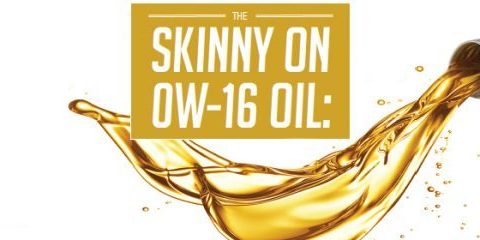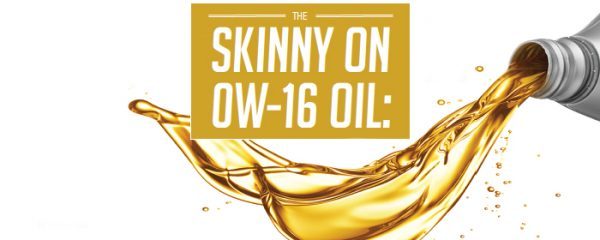Recently, National Oil & Lube News published an interview with two of our product specialists about 0W-16, discussing the technology, our company background, and its introduction in the US via our factory fill and ENEOS 0W-16 products. Below is the article as it appeared on their website.
Coming Soon to the USA; Poured in Japan Since the Late 1990s
The new ILSAC specification for passenger car motor oils, GF-6, is expected to have a first license date of April 1, 2018 — although, this license date has been delayed several times during the development process and some experts expect it to slip into 2019. Additive companies and oil marketers are in the process of evaluating prototype GF-6 engine oil for performance in the newly developed engine tests. According to Lubrizol, the result of this testing will aid in the setting of balanced commercially feasible performance standards for ILSAC GF-6 engine oils. The trend to lower viscosities will continue with the introduction of a new viscosity grade in GF-6 — 0W-16.
Although it may sound new and scary, 0W-16 oils have been in use for almost two decades in Japan. JXTG Nippon Oil & Energy, makers of ENEOS oil, have been working with Japanese automakers to develop 0W-16 oils since the late 1990s. We caught up with a couple of their representatives — Hiroya Miyamoto, senior manager of OEM group, and Hiromi Takahashi, deputy general manager — to get some further insight into what the U.S. might expect with the introduction of 0W-16 oils.
NOLN: Can you share some information about what you’ve been doing with 0W-16 oils in Japan?
Miyamoto: 0W-16 oil was introduced in Japan before 2000. 0W-16 showed higher fuel economy than 0W-20 engine oil. It will also give you remarkable quick engine starts at cold temperatures. There are several concerns [about 0W-16 oils] due to their lower viscosity, like increased wear, increased oil consumption and lower oil pressure. But our long history [with 0W-16] has addressed these concerns. The 0W- 16 project is just the beginning of what JXTG Nippon Oil is striving to do to offset carbon footprints. Actually, we are currently working on an 0W-8 oil.
Takahashi: We are taking our knowledge and what we have already been doing in the past in Japan and trying to expand it here in the States. There are products like the 0W-8 oil that we have already been working on — it’s been a couple of years since we started filling some cars with it back in Japan. We don’t know as of yet when it will be coming to the U.S. market, but there will be a target point for that in the future. We have been doing 0W-16 oil since the late 1990s, and it’s finally coming out here in the U.S. market.
NOLN: What are some of the concerns about 0W-16 oils?
Miyamoto: [Some may be worried that] lowering viscosity might cause increased wear or a pressure issue.
Takahashi: Those were concerns with having such a low viscosity oil, but with more than 15 years of background in 0W-16 oil, we are able to address those issues and create a benefit of increasing fuel efficiency, when compared to 0W-20 oil.
NOLN: What type of fuel efficiency increase are you seeing with 0W-16 oil?
Miyamoto: So we tested a Honda Fit on a dynamometer. The 0W-16 showed an improvement in fuel economy by 2 percent when compared to 0W-20.
Takahashi: Two percent doesn’t sound like much just car by car, but when you look at the overall carbon footprint one company can make by saving 2 percent, it is quite substantial — especially when car companies like Toyota are selling millions of cars a year. Saving 2 percent on half of that fleet really makes a difference environmentally.
NOLN: What are some of the changes manufacturers will make in engines as we start to move into these lower viscosities?
Miyamoto: It depends on the company, but we need to control some factors like pressure and friction conditions.
NOLN: Are there any vehicles on the road in the United States today that are or will be recommending use of an 0W-16 oil?
Takahashi: We don’t know what the recommended use in the U.S. will be yet. We know some Japanese manufacturers are starting to first fill 0W-16, and those vehicles will be available for the 2018 model year. So, these cars are going to be coming out in the next couple of months. In regard to what the OEs are going to recommend, we are still unclear; however, the fuel mileage estimates they state on those vehicles are [with] using 0W-16.
NOLN: What are some of the cars in Japan being factory filled with 0W-16? Will these be coming to the U.S. with 0W-16?
Takahashi: We know what cars that 0W-16 is recommended for. For example, Toyota Prius C, Honda Fit after 2013 model year and Honda Hybrid vehicles such as Accord, Odyssey and CR-Z. Those are the things they are doing overseas in Japan, so it may be a guideline as to what they are going to be doing here. Now, we recommend 0W-16 for 2018 model year Toyota Camry and the Camry Hybrid that are manufactured in the U.S.
NOLN: If the U.S CAFE standards don’t shake out as planned, is 0W- 16 still relevant and can it justify the dollars to bring 0W-16 to market in the U.S.?
Miyamoto: CAFE standards push the need for improved fuel economy and lower viscosity oil in the marketplace. However, Japan also has their own regulations for increasing fuel efficiency and reducing carbon dioxide, so 0W-16 would have been created even if CAFE standards did not exist.
NOLN: Are there enough benefits in the four-point difference between 0W-20 oil and 0W-16 oil to justify the dollars it takes to get it to market?
Takahashi: We believe so. It is one step that oil companies like us are taking to try to make a more environmentally friendly product. In regard to the four points, in the past when comparing 0W-20 to 5W-30, we were getting anywhere from a 2 to 4 percent increase in fuel efficiency. With this four point difference [between 0W-20 and 0W-16], we are already getting a 2 percent increase in fuel efficiency.
NOLN: What base oil stock is 0W-16 made from, and does it have any special properties?
Miyamoto: It is a 100-percent synthetic oil made from Group III base stock. The key point to 0W-16 is formulation, not raw material. The most important thing is [the formulation of the] base oil and additives.
Takahashi: The biggest thing we see when it comes to specialty oils like this is, any blender can come up with an oil that is a 0W-16 viscosity, but after the product is utilized, will it be able to withstand the heat; is there enough anti-wear protection and oil film retention; everything comes in to play.
I remember a lot of the fear when 5W-20 came out, people were afraid because it was something new. A big peace of mind should come with knowing we’ve been doing this for more than a decade. I think that’s enough time for us to really perfect what is needed to maximize a 0W- 16 on the OE side.
NOLN: How backward compatible will 0W-16 be?
Takahashi: That really depends on what the OEs are going to state. We are usually pretty handcuffed on how they state it. Some of the vehicles that require 0W-20 can probably use 0W-16, but it all depends on what manufacturers want to claim and allow.
NOLN: Has JXTG Nippon been involved in any of the GF-6 standards development or testing?
Miyamoto: We are not very involved with the development of the GF-6 standard, but because of our long history with this product, we believe API and ILSAC looked into our knowledge to develop the standard for GF-6. Actually, a Japanese automobile company and JXTG provided supporting data for 0W-16.
NOLN: What’s next after 0W-16?
Miyamoto: Most Japanese automakers have R&D centers in Japan, with which our JXTG technical team cooperates. Japan has some of the tightest environmental regulations in the world, and therefore, the Japanese manufacturers tend to use lower viscosity oils for new cars in Japan. The 0W-8 oil we have developed is already available in the Japanese market.
Takahashi: We are one of the only suppliers at this point that have 0W-8 oil, but we aren’t stopping there. Be looking for even lower viscosities to come.
View the original article published by National Oil & Lube News June 30, 2017.


